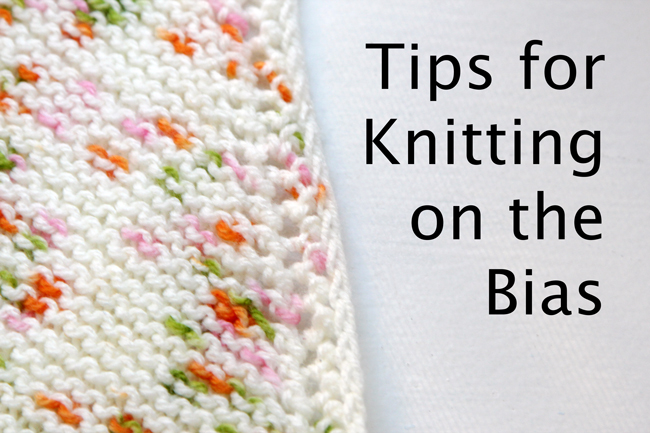
One of the designs I’m well into working on right now is bias knit. Bias knitting is when you are knitting something diagonally instead of side to side or up and down. As you can see in the photos here, the stitches in this swatch of knitting lie diagonally compared to their edging, so they’re an example of something that’s bias knit, a.k.a. knit on the bias. Just like in sewing, the term bias, at its most basic level, can essentially be understood as a synonym for diagonal.

Why knit on the bias?
Bias knitting is an easy way to create a project with visual interest. The grain of your finished knit piece lies differently that one would expect from most traditionally knit projects. Stripes are amazing to play with in bias knitting because they can zig and zag all over your work in beautiful ways. If you’re a newer knitter in particular who’s nervous about playing with changing colors to play with stripes, never fear! That’s what variegated yarn is for. Let the built-in color changes of your yarn shine as you knit on the bias!
What sort of projects can you knit on the bias?
For me, I really like bias knitting for creating flat pieces. Baby blankets, shawls, wraps, scarves and cowls (not coincidentally some of the most relaxing things to knit, no?) are all perfect for knitting diagonally.
How do I knit on the bias?
It’s just a matter of where to place increases and decreases. If you want to knit a rectangle (i.e. a scarf), all you’ve got to do is increase along one side of your rectangle, while at the same time decreasing on the other side of the rectangle. Here’s a sample pattern for how to construct a rectangle on the bias:
row 1. (RS) Work an increase near the beginning of the row (such as a M1, YO or kfb). Work a corresponding decrease (like a k2tog or ssk) near the end of the same row.
row 2. (WS) knit in pattern without increasing or decreasing.
PS: If you want your rectangle to slant the opposite direction from the pattern above, work the decrease at the beginning of the row and the increase at the end. Simple!
Let’s say you’re hoping to knit a square shape that is knit on the bias but the outline of the shape isn’t slanted like the piece would be above. For the first half of the project, you’ll need to work increases along both sides of your project until it’s at its widest point. Then, you’ll need to work decreases along both sides until you’ve finished forming the square. This graphic should help explain what I mean:
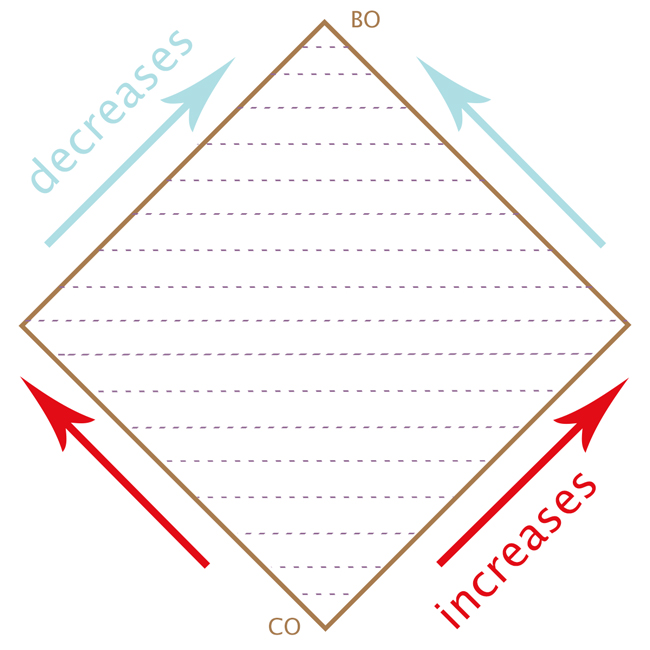
In the end, bias knitting is a fun way to cure garter or stockinette stitch boredom while still being able to knit relaxing projects. Bias knitting will literally turn your knitting on its head, resulting in beautiful, interesting-to-look-at fabric. Why not give it a try?
Have you done any bias knitting that you’d like to share? What’s your favorite bias knit project?
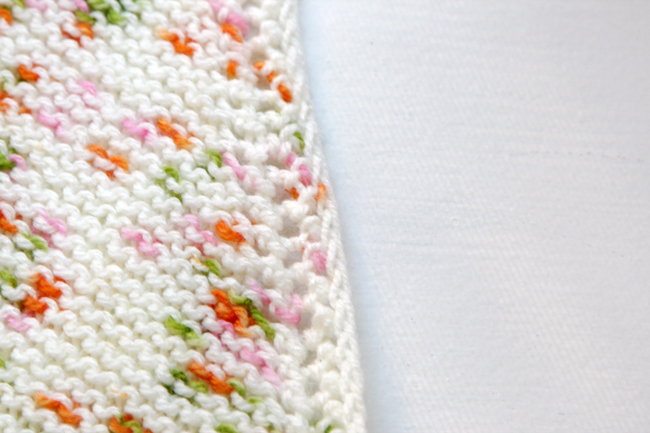
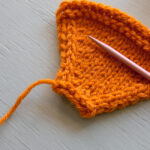
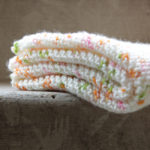
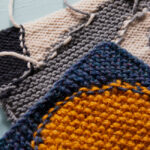
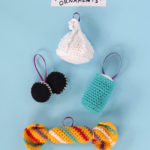


Love doing cotton dishcloths this way. Easy and quick, but look good too.
I knot on the angle quite frequently. I like it and it’s quite fun to see how the printed yarns turn out, too!
I loved to knit on the bias.. I also love to use varigated to knit baby blankets for charity. My question is.. and I have asked it countless times. How to make the ending corner look like the beginning. I gotten advice to slip the stitches, knit throu th back loops to no avail. I would love any tips you can give this has been my pet peeve for years.
It’s tough to get it perfect. In the current design I’m working on, I’m using a 3 stitch cast on for a more rounded corner combined with an edging that helps round out the corners as well. I know this is just a way to mask the lack of crispness, but it helps for symmetry freaks like me!
I always learn something new , thank you Heidi.
OOOO I love this! I’ve never tried anything like this. I’ll have to swatch with this concept when I finish up the scarf I’m currently knitting. Thanks for a great suggestion!
I always use a single or double crochet border on my bias knits, it helps finish up the awkward corner and it tames the stretchy edges just a bit so they aren’t so wild.
First of all, outstanding explanations! I covet your communication skills. They are sweet and educational.
I have also made bias knitted square washcloths and I’m wondering how to make a rectangle on the bias. For me, I prefer some crafts to be rectangle. I’m guessing increasing on one side while decreasing on the other. One way to find out, another washcloth. =)
Hi Elaine! You’ve got it – just increase on one side and decrease on the other. Take a look at my Big Old Bias Knit Scarf for an example of a rectangular object knit on the bias. :)
Your directions are easy to comprehend. However I make things hard for myself. I want to knit on the bias with a diagonal stitch. (sk 1 stitch ktb next stitch then knit in skipped stitch). any suggestions.
Thank you
Hi Terri,
I’d recommend beginning with a swatch of the stitch pattern to see if your stitch works out and is creating the shape you want. Then once you’re satisfied, you can cast on a larger project with confidence. :)
Let me know if that helps!
Heidi
Hey there! I’ve used this method for a few hot plates and also for a baby blanket. I love the method, but my pieces come out more rhombus shaped. I tried blocking the blanket by clipping it onto a rug, spraying it with water, and leaving it overnight, but it’s still not quite right and I feel like it’ll go back to being really long if I wash it again. Any tips?
What pattern are you using?
What would happen if you add a stitch at the end of the row as well as the beginning?
It will be two stitches wider. Just be careful that your increases & decreases are happening in the same spot, and the pattern will otherwise be the same. :)
Is the border in your pic above part of the bias pattern or is it separate. I can only see the one side of the knitting. If part of it please explain the beg and end of row stitches. Thanks bunches. Deb
I’ve also messaged you on Ravelry.
Hi Deb! There is a little bit of a border. The pattern pictured in this post is the Peas & Carrots Baby Blanket, and it uses a 4 stitch border.